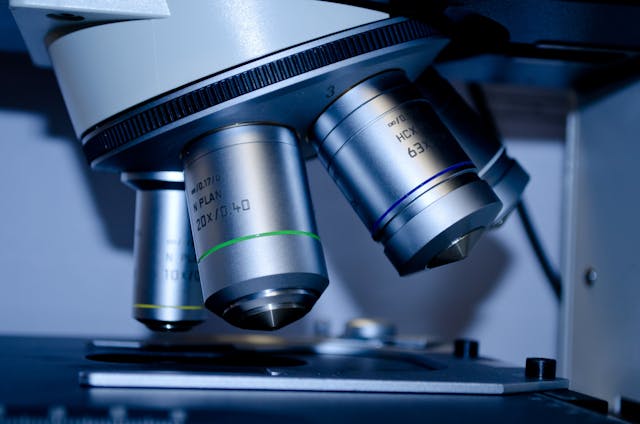Viruses can continue to be infectious for hours and even several days on plastic surfaces such as glass, metal or plastic. It is therefore very important to regularly clean and disinfects your microscope in order to ensure the safety and health of research staff and laboratory technicians.
There are a number of best practices that can be employed to clean and sterilize a microscope and optical system.
Cleaning the microscope frame
After a microscope has been used, the frame should be cleaned if the surfaces are displaying any noticeable imperfections or dirt. The next step is to disinfect the surface in order to kill any germs that may be present.
After cleaning has taken place, disinfecting helps to cut down the chances of infections spreading to other members of the laboratory. The eyepiece shades, focusing knob, nosepiece and stage handle are routinely touched while operating a microscope, so it is of particular importance that those parts are carefully cleaned and sterilised.
For the cleaning and disinfecting of your microscope frame, there are several best practices.
When cleaning the frame and looking to remove stains, the frame should first be wiped with a cloth that has been soaked in a little neutral detergent. The frame should then be wiped with a cloth that has been fully immersed in lukewarm water. Avoid touching the lens while cleaning.
When disinfecting the frame 70% ethanol is recommended to be applied as this provides effective disinfection of the frame without causing any damage. Other than ethanol, organic disinfectants should be generally avoided as they can often damage plastic parts of the microscope.
Correct hand hygiene should also be followed while cleaning and disinfecting a microscope. Be sure to wear gloves while cleaning and disinfecting and then discard the gloves afterwards. Wash hands thoroughly with soap and water or an alcohol-based sanitiser containing a minimum of 60% alcohol.
Cleaning the optical system
Optics should be cleaned and disinfected straight after use, as with the frame. This not only ensures that the equipment is clean and safe for other lab users but also has the effect of removing any dust or other contaminants that can have an adverse impact on observation and image quality and even cause to the surface of the lens.
There are several steps that can help with cleaning dirt, dust and germs from the exposed areas of condensers, eyepieces, filters and objectives.
The first step is to use a loupe to find any dust on the lens surface. Remove any dust or dirt with a blower. Wrap lens paper around your finger, leading to the creation of a point and then put a small amount of cleaning mixture or lens cleaning fluid onto the tip. 70% ethanol is recommended for safe and effective cleaning and disinfecting.
When the lens surface is being cleaned, wipe in a circular mention from the centre of the surface to the periphery. Check for any remaining dust and reattach the component.
As well as regular cleaning and disinfecting your microscope it is also a good idea to ensure the environment it is used in is clean, free of moisture and with a consistent temperature.







